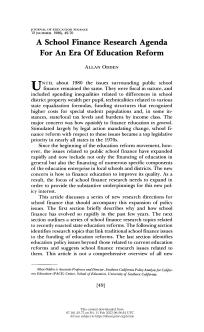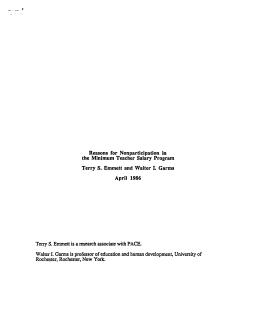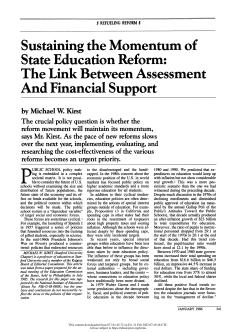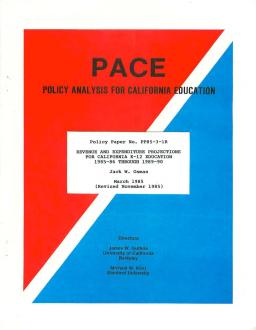Published
Summary
Before the 1970s, public school finance issues were mainly related to spending inequalities. However, since then, the focus has shifted towards financing education to improve its quality. This article suggests new research directions for school finance that address this policy interest, including topics related to state education reforms, traditional school finance issues, and education policy issues beyond current reforms.
Published
Summary
California's K-12 education system has experienced funding instability, with revenues per pupil fluctuating and staying constant for years. The education system is attempting a major program of quality improvements while keeping funding constant, a challenge that may be difficult to maintain in the future. The state gives K-12 education a lower priority than most other states when state revenues are tight. The state needs an additional $7.2 billion in the next five years to maintain the current level of real resources per pupil.
Published
Summary
This study investigates low participation in the Minimum Teacher Salary provision of SB 813, which had previously been reported by the Legislative Analyst. Only a small percentage of funds were claimed for 1983-84 and 1984-85. Researchers surveyed 48 districts in CA, showing a potential mean beginning salary of over $19K by 1985-86. The concern about underparticipation may be unfounded, as a large percentage of districts will participate, while those that do not have reasons. Large districts participate more than small and medium sized ones, and participation in rural areas is increasing.
The Link Between Assessment and Financial Support
Published
Summary
Public school policy making is embedded in a complex societal matrix. It is not possible to consider the future of U.S. schools without examining the size and distribution of future populations; the future state of the economy and its effect on funds available for the schools; and the political context within which decisions will be made. The public school system is a "dependent variable" of larger social and economic forces.
Published
Summary
Several state legislatures have acted on recommendations to improve U.S. public schools, resulting in a swift and broad education reform movement. States have expanded school improvement programs, increased high school graduation and college admission requirements, deepened course offerings, and strengthened the teaching profession. Indicators of progress include longer school attendance, tougher academic courses, better counseling, higher achievement test scores, and increased teacher pay. This swift and broad movement gives reason for optimism about its success.
A Rising Tide or Steady Fiscal State?
Published
Summary
Rising national demands for better public K-12 education are not resulting in overall increases in education funding, according to an analysis of changes in education funding across all 50 states during the 1980s. While recent funding increases have halted the drop in the real level of resources per pupil that occurred in the early 1980s, only South Carolina and Tennessee have increased real revenues per child by close to 20%. Demands for education improvement exceed the level of fiscal resources needed to make those improvements.
Waivers and School-Based Program Coordination Under AB 777
Published
Summary
California's waiver authority provides school districts relief from Education Code, allowing them to seek alternatives to state requirements subject to local and state review. Waivers are automatically approved unless denied by the State Board of Education, which rarely happens over local objections. Program waivers are rare despite clamor for needed flexibility, possibly due to districts being unaware of the process, viewing it as time-consuming, or using suboptimal local procedures. Oversight hearings are recommended to explore the potential of the waiver process.
1985–86 Through 1989–90
Published
Summary
Expenditures for elementary and secondary education in California must rise by about 59 percent between 1983–84 and the end of the decade just to maintain the status quo in terms of real per-student spending. This would amount to a K–12 budget in 1989–90 of $21.9 billion. Yet K–12 revenues are projected to grow by only 50 percent (under one scenario) or by about 72 percent (under another). In other words, unless the revenue structure is significantly altered, projected school revenues through 1990 will be inadequate to maintain the same level of spending per student or will increase at a pace...







